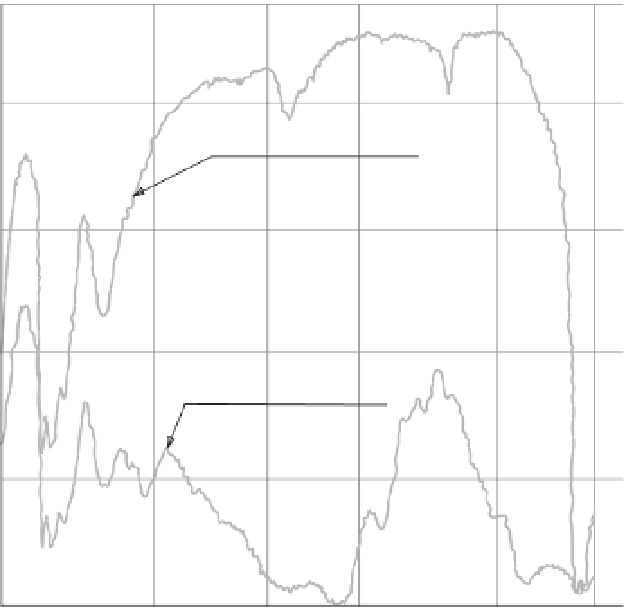Agriculture Reference
In-Depth Information
100
80
Standard PE (150
µ
m)
60
40
Thermal PE (200
µ
m)
20
7
8
9
10
12
Wavelength (
µ
m)
Fig. 4.8.
Transmissivity of standard and thermal Pe films in the range of long-wave IR (adapted from
Castilla
et al
., 1977).
but nowadays there are photoselective films
that filter the radiation selectively (Papadakis
et al
., 2000).
There are very different types of pho-
toselective films. The
antithermal films
or
static thermal shields
filter the NIR radia-
tion (near infrared) of the solar spectrum,
therefore limiting the input of energy
inside the greenhouse, and decreasing the
temperature (Verlodt and Verchaeren,
2000). They have application in warm cli-
mate areas or during the summer, but their
use has been limited because of the effect
they have on decreasing daytime tempera-
tures (2°C, on the average) and because of
their high cost.
A variant of these thermal shields are
the
thermocromic films
or
dynamic thermal
shields
that are now under development,
which filter the NIR radiation depending on
the temperature (Díaz
et al
., 2001). Therefore,
during the summer, when the temperatures
are high, they would filter the NIR radiation
limiting the warming of the greenhouse,
whereas during the winter they would let it
enter the greenhouse contributing to its
warming.
Fluorescent films
alter the proportion
of R/FR light (red/far red) affecting morpho-
genesis but they have a transmissivity to
PAR lower than the standard PE as the pro-
cess of fluorescence is not very efficient
(Pearson
et al
., 1995). Their application to
agriculture is not yet very clear (Kittas and
Baille, 1998).
Anti-pest films
are photoselective mate-
rials that block part of the UV solar radia-
tion reducing the development of pests or
diseases caused by fungi or viruses that are
transmitted by insects, which are sensitive
to the decrease or absence of this type of
radiation (Salmerón
et al
., 2001).
The best known example of this is
the reduction of
Botrytis
, when blocking

